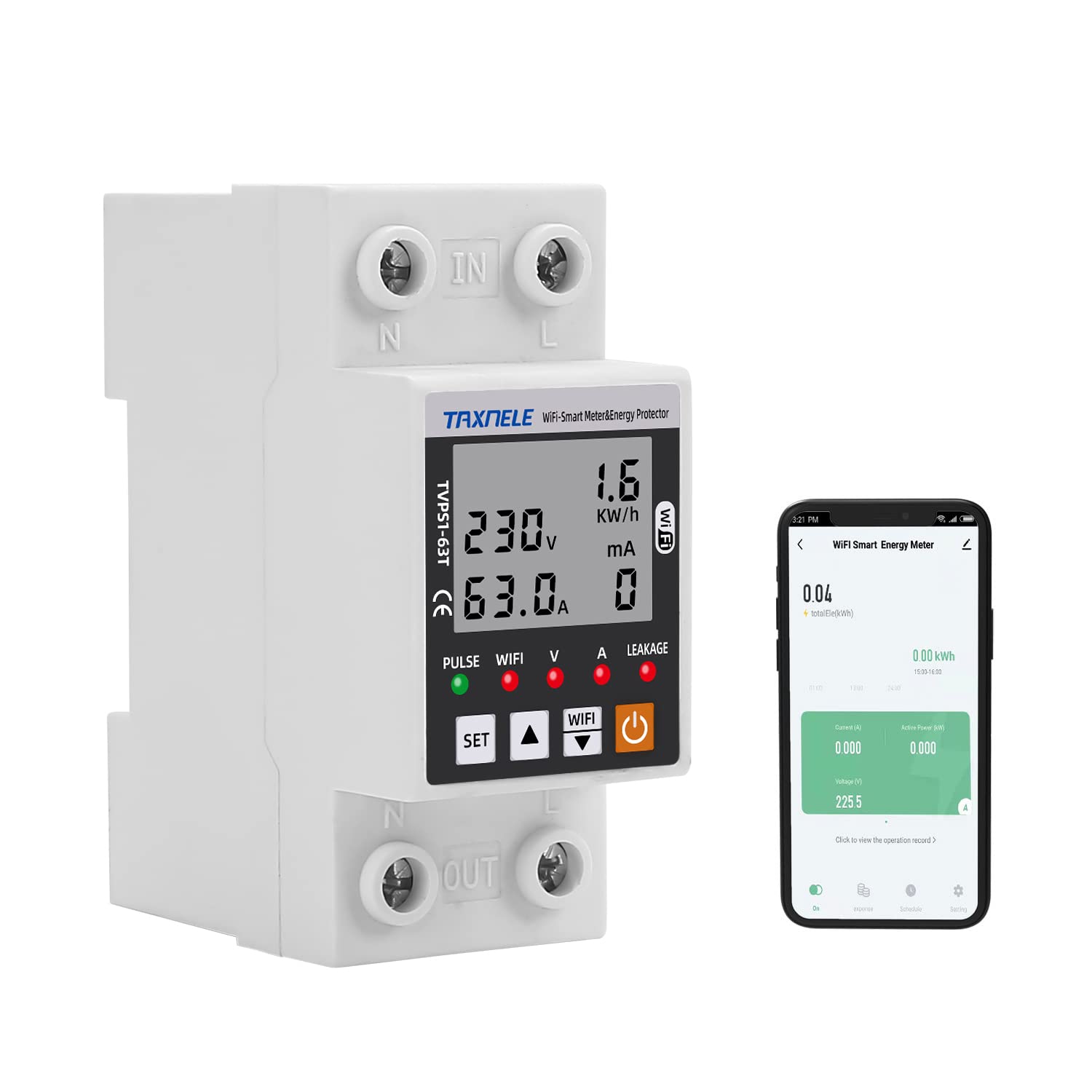1. Introduction: The Rise of Smart Energy Meter
Over the past decade, Smart Energy Meter the global energy sector has experienced a digital transformation. Traditional analog meters are being rapidly replaced by Smart Energy Meters — intelligent devices that can measure, monitor, and communicate energy usage data in real time. This transition is not only improving operational efficiency but also driving sustainability and transparency in energy consumption.
At the heart of this transformation lies connectivity, and that’s where the IoT SIM Card plays a crucial role. With reliable, secure, and scalable communication, IoT SIM cards enable Smart Energy Meters to transmit data from even the most remote locations without the need for Wi-Fi or fixed-line networks.
In this article, we’ll explore how IoT SIM Cards are revolutionizing Smart Energy Meter deployments, their benefits for utilities, and why they’re the best connectivity solution for modern energy management.
2. What Is a Smart Energy Meter?
A Smart Energy Meter is a digital device that measures electricity consumption and automatically transmits data to utility providers through a communication network. Unlike traditional meters that require manual readings, smart meters provide two-way communication — allowing utilities to monitor usage, detect outages, and optimize grid performance in real time.
2.1 Key Features of Smart Energy Meters
- Real-Time Data Monitoring: Provides accurate and live readings.
- Remote Connectivity: Transmits data via GSM, LTE, or NB-IoT networks using IoT SIM cards.
- Two-Way Communication: Enables both data collection and command delivery (e.g., remote disconnect).
- Enhanced Accuracy: Eliminates human error in manual readings.
- Energy Efficiency: Helps end users manage consumption patterns.
As smart grids and renewable energy systems expand, Smart Energy Meters become essential tools for creating sustainable energy ecosystems.
3. The Role of IoT SIM Cards in Smart Metering
3.1 What Is an IoT SIM Card?
An IoT SIM Card is a specialized SIM card designed for devices that need consistent, long-term connectivity — such as meters, sensors, cameras, and industrial equipment. Unlike consumer SIMs, IoT SIMs support:
- Global multi-network roaming
- Remote management and provisioning
- Long lifecycle (5–10 years)
- Private APN and VPN security
3.2 Why Smart Energy Meters Need IoT SIM Cards
Smart Energy Meters often operate in locations without stable broadband access — such as rural or industrial areas. IoT SIM Cards enable these meters to:
- Send real-time energy data to central servers
- Operate independently of Wi-Fi
- Remain always connected via 2G, 4G, 5G, or NB-IoT networks
- Stay secure through end-to-end encrypted communication
3.3 Communication Flow
- The Smart Energy Meter measures energy usage.
- Data is encrypted and sent via the IoT SIM Card.
- The data travels over the cellular network to the utility cloud.
- The utility platform analyzes and visualizes consumption trends.
This seamless data exchange is the backbone of efficient Smart Energy Management.
4. Advantages of Using IoT SIM Cards in Smart Energy Metering
4.1 Reliable Connectivity
IoT SIM Cards offer multi-network roaming, meaning the meter can automatically switch to the strongest available network — essential in remote regions.
4.2 Centralized Device Management
Through IoT management platforms, utilities can:
- Monitor all SIM connections in real time
- Suspend, activate, or diagnose remotely
- Manage billing and usage efficiently
4.3 Security and Data Integrity
IoT SIM Cards use Private APNs and VPN tunnels, ensuring that energy data remains encrypted and isolated from public internet threats.
4.4 Scalability for Large Deployments
Whether a utility company manages 1,000 or 1 million meters, IoT SIM Cards make it possible to scale without adding complex local infrastructure.
4.5 Cost Efficiency
By automating meter readings and minimizing manual visits, utilities save on labor, fuel, and operational overhead — while improving billing accuracy.
5. Key Technologies Behind Smart Energy Meters
Smart Energy Meters integrate multiple technologies that work together to deliver accurate and actionable data.
| Component | Function |
|---|---|
| IoT SIM Card | Enables wireless data transmission |
| MCU / Microcontroller | Processes energy usage data |
| Communication Module (LTE/NB-IoT) | Connects to cellular networks |
| Cloud Platform | Stores and analyzes meter data |
| Mobile Dashboard | Displays real-time consumption to users |
With this architecture, the IoT SIM Card acts as the communication bridge between the physical meter and the digital analytics environment.
6. Smart Energy Meter Use Cases
6.1 Utility Companies
Utility providers use Smart Energy Meters to monitor usage, reduce energy theft, and automate billing cycles.
6.2 Renewable Energy Projects
Solar and wind farms rely on IoT-connected energy meters to measure power generation, balance load, and integrate with national grids.
6.3 Smart Cities
Smart Energy Meters enable city-wide energy optimization by providing data for predictive demand and sustainability planning.
6.4 Industrial Applications
Factories and warehouses deploy IoT-enabled meters to track real-time power consumption across different production lines.
7. Challenges in Smart Energy Meter (and How IoT SIMs Solve Them)
| Challenge | Traditional Issue | IoT SIM Card Solution |
|---|---|---|
| Limited network coverage | Remote areas lack Wi-Fi | Multi-network roaming |
| Manual maintenance | On-site technician visits | Remote SIM management |
| Security vulnerabilities | Data interception risks | Encrypted private network |
| Scalability | Hard to manage 10k+ devices | Cloud-based SIM control |
| Cross-border deployment | Complex roaming contracts | Global IoT SIM support |
With these capabilities, IoT SIM Cards eliminate traditional barriers in large-scale smart metering deployments.
8. Case Study: Smart Energy Deployment in Southeast Asia
A national energy utility in Southeast Asia faced challenges with unreliable data collection from rural meters. By integrating IoT SIM Cards into over 100,000 Smart Energy Meters, they achieved:
- 98% automated data collection rate
- 60% reduction in field technician visits
- 35% faster billing cycles
- 24/7 real-time consumption tracking
The result was a fully connected energy ecosystem that improved transparency and operational efficiency across regions.
9. The Future of Smart Energy Metering with IoT SIMs
As the world transitions toward smart grids and renewable integration, the combination of Smart Energy Meters and IoT SIM Cards will be vital.
Emerging technologies such as 5G, Edge AI, and LPWAN will further enhance:
- Faster data transmission
- Predictive maintenance analytics
- Grid automation
- User-level energy insights
By 2030, more than 1.5 billion smart meters are expected to be IoT-connected globally — forming the digital backbone of a sustainable energy future.
10. Conclusion
The Smart Energy Meter is more than just a measuring device — it’s a key enabler of efficient, transparent, and sustainable energy management.
And behind its seamless operation lies the IoT SIM Card, ensuring continuous, secure, and scalable connectivity.
Whether you’re a utility provider, energy solution integrator, or IoT developer, choosing the right IoT SIM partner is critical for the success of your smart metering system.
Call to Action
If your organization is exploring large-scale Smart Energy Meter deployments, [Zhongyi IoT] provides global IoT SIM connectivity solutions tailored for energy and utility applications.
🔗 Connect with us today to discuss a customized IoT SIM plan for your smart metering project.



